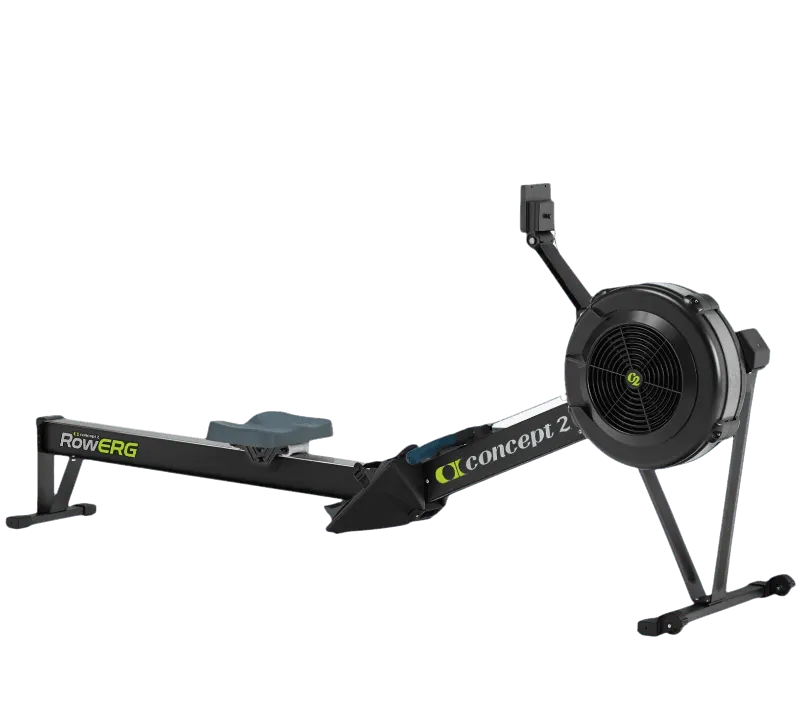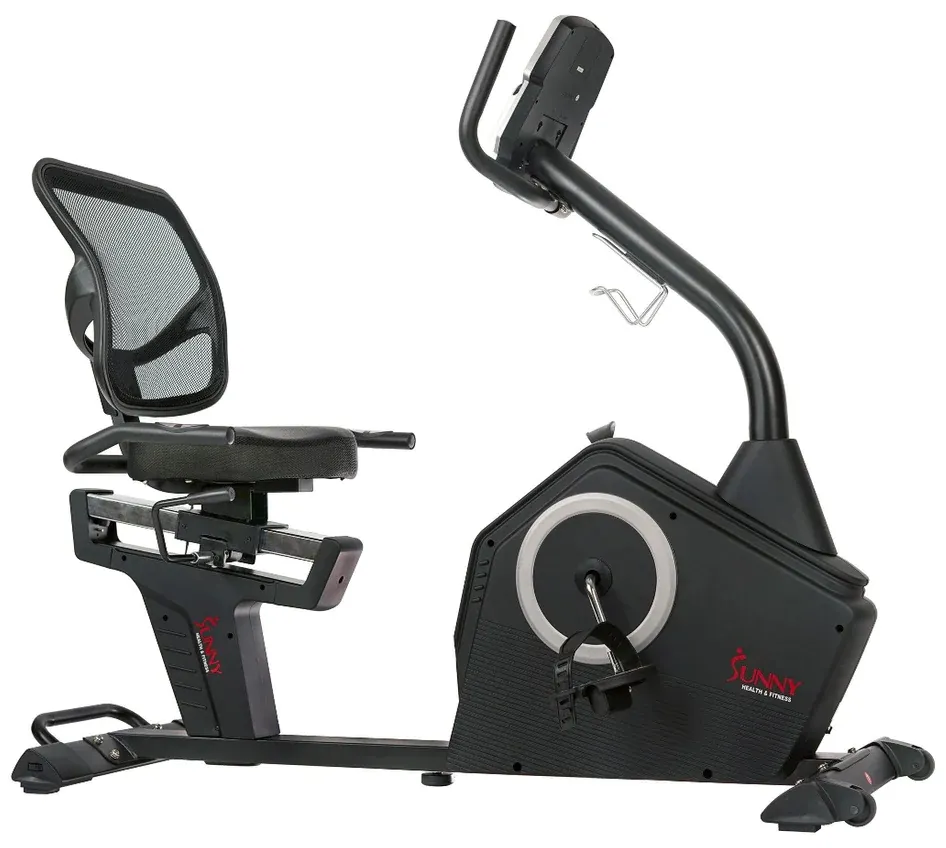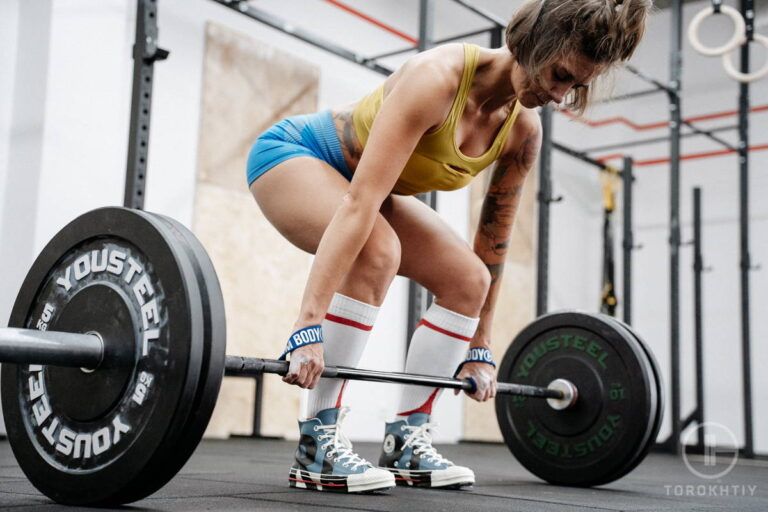Rowing Machine vs Stationary Bike: The Face-Off
Resolving to get in shape on New Year’s Eve is the first of many decisions. Will you hit a gym or outfit your garage? What type of training would you do?
Once you’ve settled on good ol’ cardio, an array of potential machines stare back at you. This rowing machine vs stationary bike showdown will compare two of the most popular calorie-blasting equipment options to help you decide.
Rowing vs cycling, what’s the difference? Rowing machines engage total body while bikes are a predominantly lower-body workout. Rowers also take the lead in calorie expenditure but couldn’t match in user-friendliness and safety.

What Is a Rowing Machine?
Rowing machines – also known as ergs or rowers – mimic the motion of rowing a boat. Instead of navigating waters, you hold a handle attached to a cable and slide back and forth on a stationary platform.
It has a handle, gliding seat, and pair of footrests. Fans, magnets, water tanks, or hydraulics are used to create the resistance. The reading of basic performance stats is a must for any console.
The body movement is uncanny on indoor and watercraft rowing. Primarily used for training competitive athletes, rowers’ efficient and effective workouts quickly made inroads into commercial and home gyms.
What Is a Stationary Bike?
Stationary bikes are common fitness equipment. They’re based on a well-known motion of cycling. You’ll see a saddle, handles, and pedals. Hop on, and bid farewell to stubborn calories!
Exercise bikes have witnessed various experiments over the years. Most are named after their sitting position, i.e., upright and recumbent. You’d be surprised that the trunk and hip activity is similar in both types.
Bikes also sport silent magnetic resistance. You can crank up levels. Some manufacturers have even tested cross-trainers with moving elliptical handlebars.
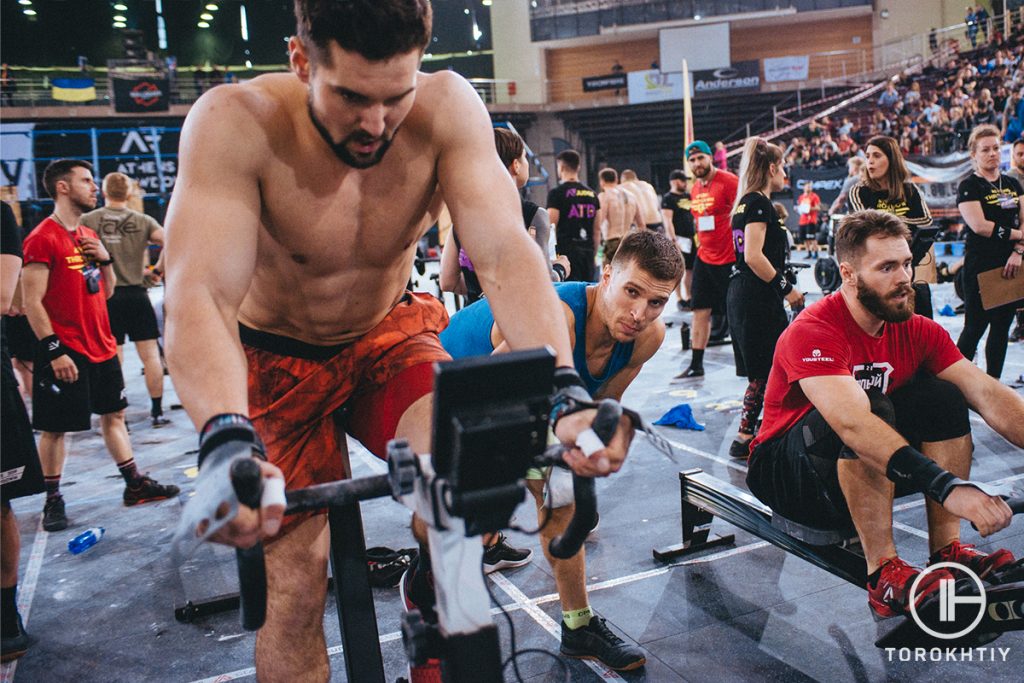
Rowing Machine vs Stationary Bike: Differences
There are two dimensions to solving the rowing vs cycling conundrum. You can sort it through workout effectiveness or general accessibility. End results would vary with each individual, depending on aims and skills.
1. Calorie Burn
Calorie expenditure is the main appeal of aerobic exercises. Short, steady bouts of physical activity get your sweat on and blood pumping. The question is, what burns more calories, the rowing machine or stationary bike?
Established studies indicate that the energy cost of rowing is significantly higher than cycling at all power outputs. The following chart by Harvard Medical School gives deeper insights. Rowing seems to take a visible lead as workout intensity ramps up. Meanwhile, rowing is better suited for HIIT while cycling is frequently used for steady-state training programs.
| Activity, Effort | 125-pound person | 155-pound person |
|---|---|---|
| Rowing, Moderate | 210 | 252 |
| Bicycling, Moderate | 210 | 252 |
| Rowing, Vigorous | 255 | 369 |
| Bicycling, Vigorous | 215 | 278 |
A lot of factors translate into the exact number of calories burned, such as body size, exertion, and metabolic equivalents (METs). You can check out the metabolic cost of multiple exercises, as given by the Compendium of Physical Activity.
2. Muscles Worked
Rowing is considered a total-body workout. You initiate the drive with your arms and legs. Core muscles stabilize and support the movement. With successive push-pull and concentric-eccentric phases, you get to work up a whopping 85% of muscles with a single stroke.
Spinning on a bike is good for toning lower-body muscles, including glutes, quads, hamstrings, and calves. However, your core and lower back are forced to do less balancing and bracing, compared to rowers. Additionally, upper-body muscles like biceps, triceps, deltoids, and lats remain inactive (unless you use an air bike.) So, Is rowing better than cycling? Sure, it is when muscles and bone strength are concerned. Rowers may promote bone mineral density over time, whereas cycling doesn’t confer any osteogenic benefit.
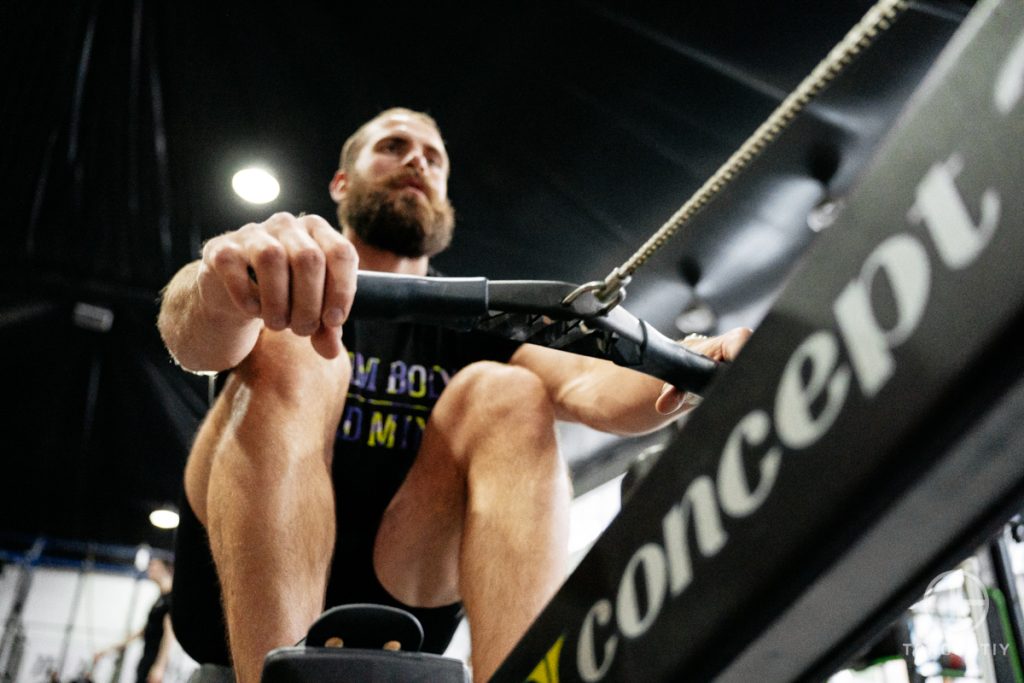
3. Injury Risks
You can select a rowing machine or exercise bike for adopting a low-impact cardio solution. Both modalities encourage a seated position with feet securely strapped down. They put less stress on joints than running or stair-climbing. However, cycling is safer since it involves fewer muscles. Therefore, indoor cycle training is a preferred cardiac rehab method. Also, it corrects posture and gait issues.
Most rowing injuries are the result of the overuse syndrome, not a faulty technique alone. Stress patterns affect the lower back, rib cage, and knees. The injury incidence per 1000 hours is 5.7 for amateur rowers and 2.8 for road bikers. Note that indoor conditions might alter the frequency of injuries, not the discrepancy between two.
4. Ease of Use
Stationary bikes pose no entry barrier. Anyone can start pedaling and crushing WODs, regardless of their health status. Rowing vs cycling has a bigger learning curve early on. Not every cardio enthusiast is familiar with the rowing movement. Yet, it’s not that complicated. Catch, drive, finish, and recovery make up a four-stage process. You’ll have to spend some time polishing your technique before diving into a full-fledged training program.
On to the second point, rowers demand more floor area. It’s not uncommon for a machine to occupy seven or eight feet. Some can break down from the middle or stand upright. You’ll see two caster wheels tucked under the front stabilizer. Thus, storage and transportation are on par with cycles, if not better. Specs vary with each model, but both machines fall into a similar range: 50-100 lb item weight, 250-300 lb weight capacity, steel construction, and comparable prices.
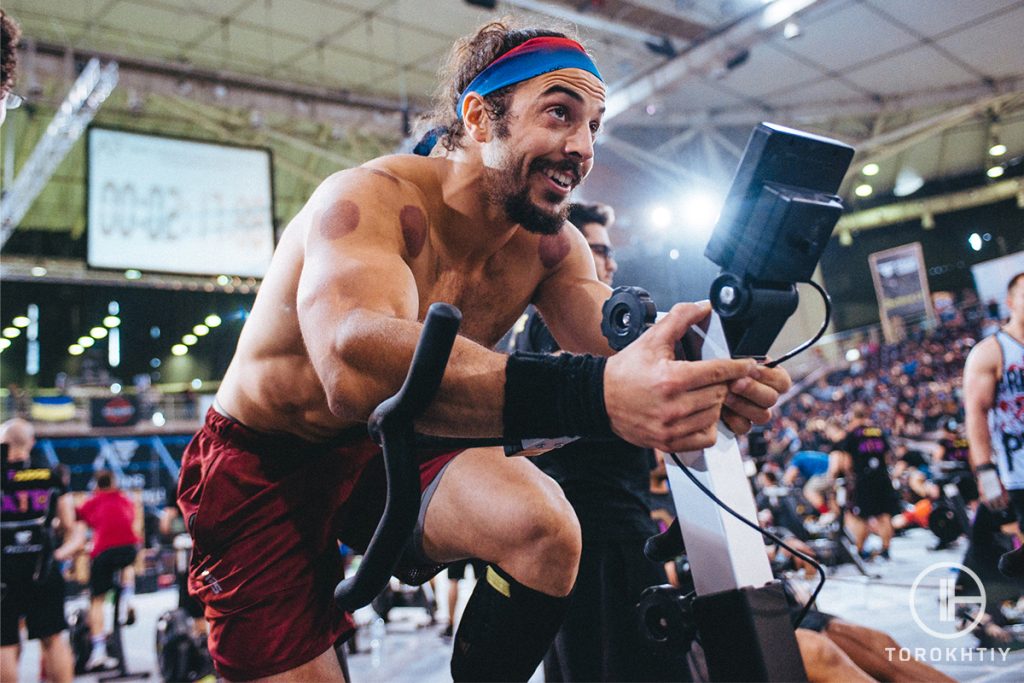
Rowing Machine vs Stationary Bike: Summary
The American Heart Association recommends weekly 150 minutes of moderate or 75 minutes of vigorous exercise. Rowing and cycling are proven mantras to achieve cardiovascular fitness. They have more commonalities than contradictions. Still, rowers finish ahead in a close fight for muscle activation and energy expenditure. Bike’s safe, unintimidating, and accessible qualities make them desirable too. Then, there are some rehabilitative benefits. Not sure yet? Look at the table down below.
| Criteria | Rowing | Cycling |
|---|---|---|
| Fitness Level | Beginner to Advance | Beginner to Advance |
| Muscles Worked | Total Body | Lower Body |
| Impact and Injuries | Low | Low |
| Transfer of Training | High | High |
| Learning Curve | Yes | No |
| 3D Seat Adjustments | No | Yes |
| Footprint | Requires a large lateral area to operate | Dedicate a permanent spot for a bike |
Pros and Cons of a Rowing Machine
Positives:
- One of the most efficient calorie-burning exercises
- A full-body workout, strengthening all major muscle groups
- Suitable for high-intensity interval training
- Increases bone mineral density with regular use
- Folds down or stands upright for a hassle-free storage
Could be better:
- Takes some trial-and-error practice to perform correctly
Pros and Cons of a Stationary Bike
Positives:
- One of the most accessible, easiest, and safest forms of cardio
- Works lower-body muscles, including butts and legs
- Vast adjustability and spare parts availability
- Promotes a healthy posture, gait, and balance
- Employed for rehab of cardiac patients and injured athletes
Could be better:
- Not a full-body exercise machine
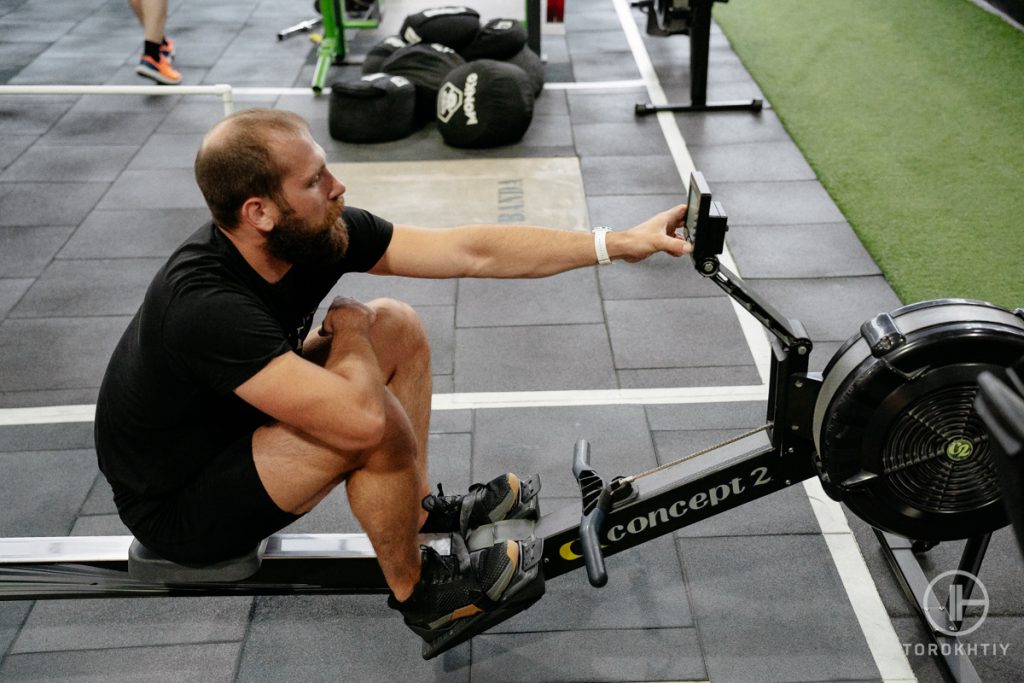
Rowing Machine vs Stationary Bike: When to Use Each?
Having learned the pros and cons of each machine, let’s explore the best situations for their use. Rowing machines have a nominal upper hand regarding muscle engagement and energy expenditure. If your goal is to boost calorie burn, rowers seem an intelligible way forward. However, getting the hang of the technique can result in sufficient time loss. If handled impatiently, that window may expose rookies to stress and overuse.
Cycling can help you check off the majority of fitness tasks without bringing these side effects. After all, the rowing vs cycling choice boils down to your preference. What excites you more? Pushing pedals or propelling boats?
You’ll have a better time squeezing benefits if you enjoy the process. In case you’re training for a specific sport (regatta or road racing), opt for the respective method. Ultimately, don’t confine yourself to a singular piece of equipment. Get both, provided that you have enough budget and space. Cross-train to kill pain and maximize gain! None of your efforts will go in vain!
Concept2 RowErg is a top-notch rowing machine tested in all conditions and contests. The foldable frame with a 96”x24” footprint and dual height options (14” and 20”) fits well into home gyms. There are no weight and height limitations. It has a crazy 500 lb load capacity. A contoured pad glides smoothly over a 54″ long rail. Besides superior build and ergonomics, you’ll get an assuring two-year warranty.
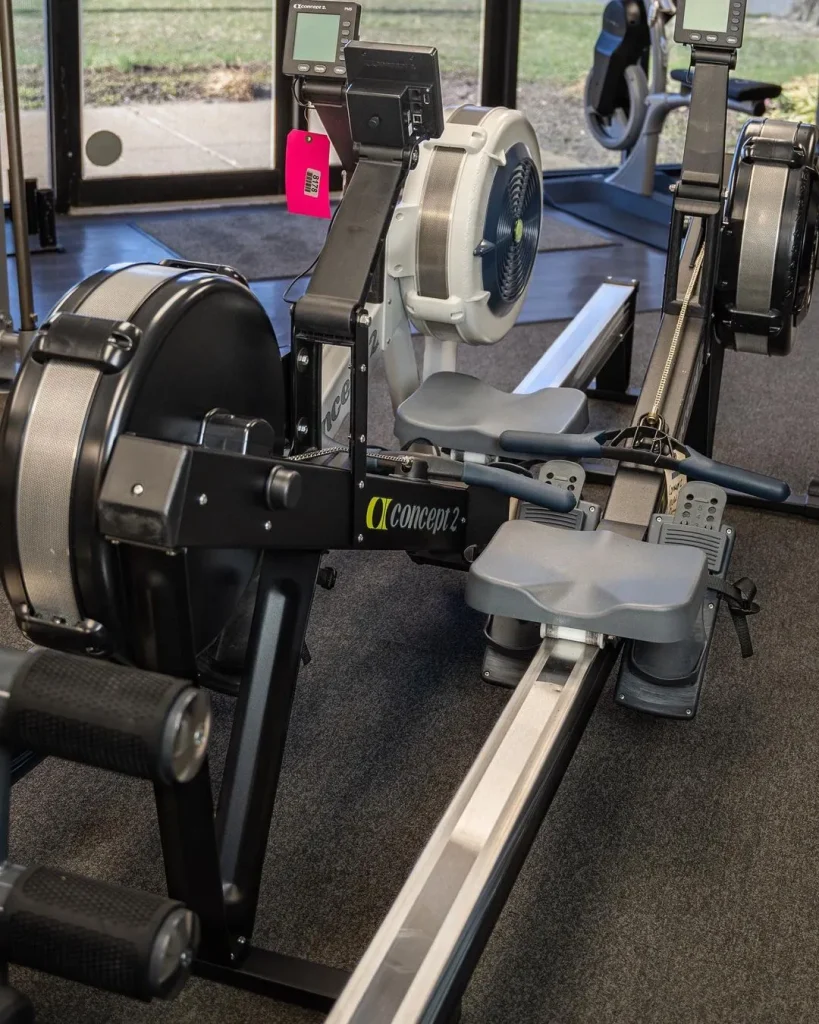
RowErg boasts uncapped air resistance, ten-point damper technology, and a world-class PM5 Monitor. There are onboard games and wireless connectivity. It goes with over thirty external apps, including ErgData.
Sunny Health & Fitness Recumbent Bike is an excellent option with a 7lb weighted flywheel, 24 built-in programs, and 16 levels of electromagnetic tension. The heavy-duty frame supports up to 300 lbs.
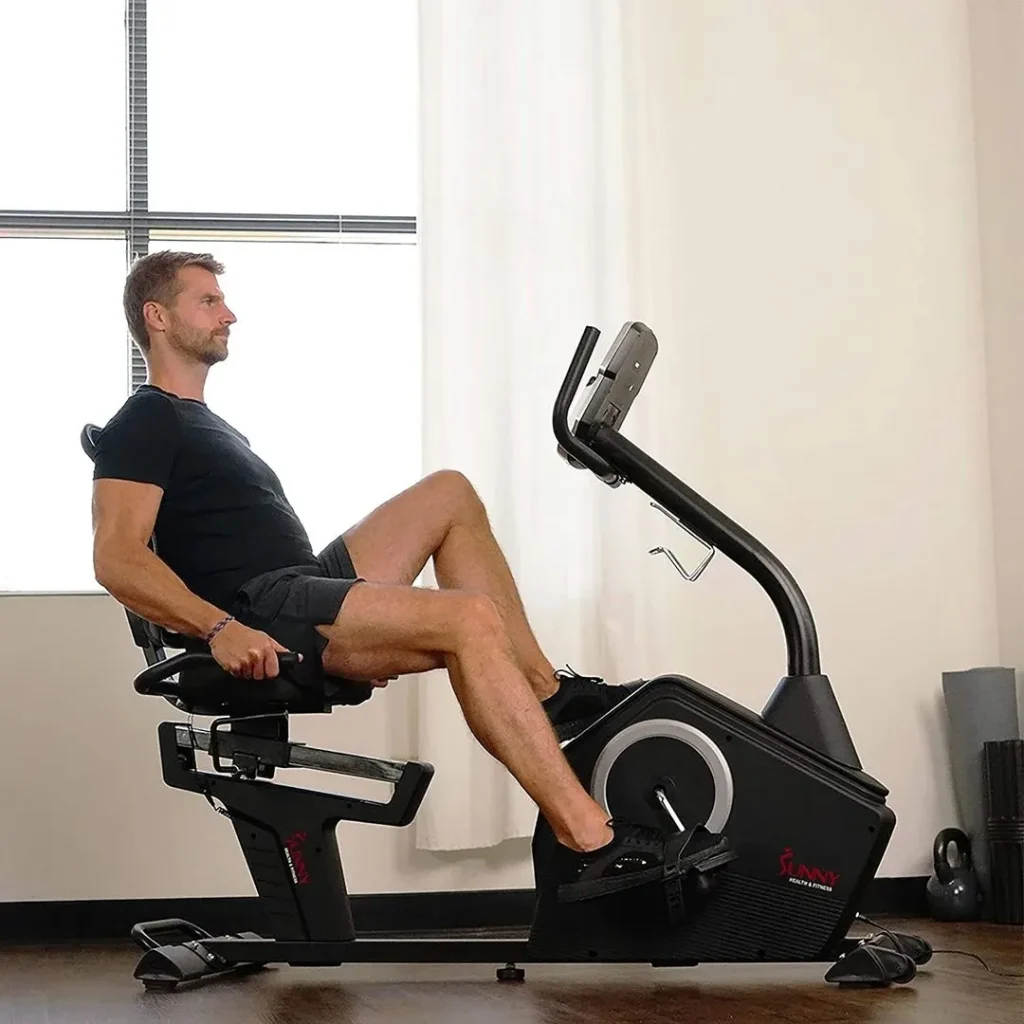
The plush seat with a mesh backrest moves fore and aft, getting tailored for your comfort. It accommodates 30”-40” inseams and 13” max strides. An additional handlebar set is placed under the seat with heart rate sensors. A bottle holder should catch your sight. The console gives way to a device above so you can watch your favorite shows or follow lessons on the SunnyFit App.
FAQ
Is a Rowing Machine a Better Exercise Than a Stationary Bike?
The idea of ‘better’ depends upon individual goals, preferences, and circumstances. You can choose a rowing machine or exercise bike for cardio, and that would be a wise decision. Go with what you like unless you’re eyeing a specific event like Grand Tour or Rowing at Summer Olympics.
Is Rowing Better Than Spinning for Weight Loss?
Weight loss follows a purposeful calorie deficit. You must simultaneously optimize your diet and training. Indoor cycling is a known weight loss method without losing muscle mass. Also, rowing machines decrease body fat percentage. Therefore, either an exercise bike or rowing machine for weight loss is suitable.
What Muscles Do You Work Out Cycling vs Rowing?
Cycling and rowing work your lower body pretty hard. It stretches from calves to quads and hammies to glutes. Your core, including hip flexors and abs, are involved to differing degrees. The upper body has no part while cycling. Rowers thoroughly engage your chest, back, shoulders, and arms.
Conclusion
Rowers and bikes promote heart health, burning a good number of calories. They’re low-impact and generally safe. The ‘rowing machine vs stationary bike’ debate breeds contention rather than a conclusion. There is no one-size-fits-all answer. That boils down to your likes and dislikes.
So, what do you favor? Write in the comment section!
Also read:
- Best Rowing Gloves
- Best Recumbent Bike Rower
- Water Rower vs Magnetic Rower
- Best Budget Rowing Machine
- How Many Calories Does Rowing Burn
- Best Water Rowing Machine
- Best Foldable Rowing Machines
- Best Rowing Machine for Beginners
References:
- Health Benefits of Indoor Cycling: A Systematic Review // NCBI: https://www.ncbi.nlm.nih.gov/pmc/articles/PMC6722762/
- A Kinematic Comparison of Ergometer and On-Water Rowing // Journals: https://journals.sagepub.com/doi/abs/10.1177/036354658901700310?journalCode=ajsb
- Effects of exercise involving predominantly either joint-reaction or ground-reaction forces // NCBI: https://pubmed.ncbi.nlm.nih.gov/9258756/
- Cycling and bone health: a systematic review // NCBI: https://www.ncbi.nlm.nih.gov/pmc/articles/PMC3554602/
- Indoor cycling training in rehabilitation of patients after myocardial infarction // NCBI: https://www.ncbi.nlm.nih.gov/pmc/articles/PMC8628460/
- Effects of stationary cycling exercise on the balance and gait abilities of chronic stroke patients // NCBI: https://www.ncbi.nlm.nih.gov/pmc/articles/PMC4681938/
Why Trust Us?
With over 20 years in Olympic Weightlifting, our team does its best to provide the audience with ultimate support and meet the needs and requirements of advanced athletes and professional lifters, as well as people who strive to open new opportunities and develop their physical capabilities with us.
By trusting the recommendations of our certified experts in coaching, nutrition, dietology, and sports training programming, as well as scientific consultants, and physiotherapists, we provide you with thorough, well-considered, and scientifically proven content. All the information given in the articles concerning workout programming, separate exercises, and athletic performance, in general, is based on verified data. We ensure that you can rely on our professionals’ pieces of advice and recommendations that can be treated as personalized ones which will benefit you and fully meet your needs.
The product testing process is described in more detail here
Author: Ihor Shymechko
Pro Olympic Weightlifter, Coach
Best Results: Snatch – 208 kg,
C&J – 240 kg
Ihor has been a professional weightlifter since 1996, boasting over two decades of competition experience. His notable achievements include clinching the European Championship in 2009 and securing a silver medal in the 105kg division at the Senior World Championships in 2011. Ihor represented his country in the 2008, 2012, and 2016 Summer Olympics. After retiring from competitive weightlifting, he transitioned to coaching, leveraging his vast experience to guide athletes who now compete on both national and international stages.

